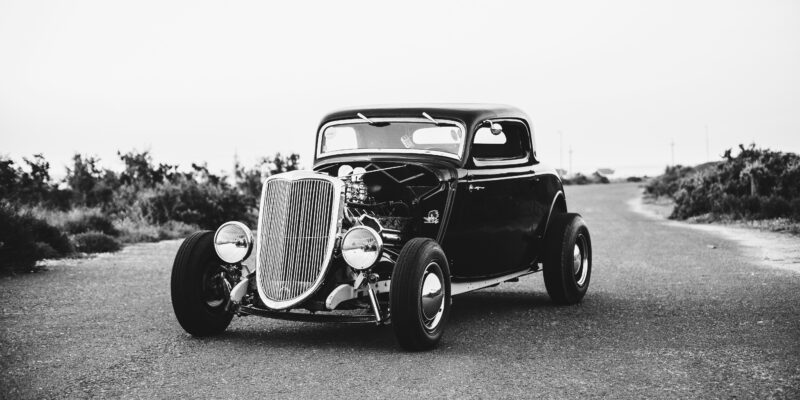Exploring the Greatest Minds in Automotive Engineering
The automotive industry owes much of its progress to the brilliant minds behind the scenes. Their unwavering passion and lifelong dedication have been instrumental in building the automotive sector from the ground up, shaping the way we still view and interact with automobiles today. While their names may be familiar, delving into their legacies offers a deeper understanding of their profound impact. Below we’ll explore the rich history and contributions of some of the greatest minds in automotive engineering.
Celebrating the greatest minds in automotive history
Ferdinand Porsche
Ferdinand Porsche was a pioneering automotive engineer whose impact on the industry is still felt today. With a career spanning over seven decades, Porsche’s career in automotive engineering began in the early 20th century when he joined the Austrian subsidiary of the German electrical firm, Bela Egger & Co. His talent and passion for engineering quickly became apparent, and he soon rose through the ranks to become the company’s technical director.
During his time at Bela Egger & Co., Porsche developed several groundbreaking innovations, including a four-wheel-drive system for electric cars and a hybrid vehicle prototype. In 1931, Porsche founded his own engineering consulting firm, Dr. Ing. h.c. F. Porsche GmbH, which later became Porsche AG.
It was during this time that Porsche began working on what would become his most iconic designs: the Volkswagen Beetle and the Porsche 911. The Volkswagen Beetle, also known as the “People’s Car,” was commissioned by the German government to create an affordable and reliable car for the masses.

Henry Ford
No discussion of automotive engineering would be complete without mentioning Henry Ford, the visionary behind the Ford Motor Company. His Model T, introduced in 1908, became an icon of the automotive industry and paved the way for modern mass production techniques.
The Model T was a game-changer. Its simplicity, reliability, and affordability made it accessible to millions of people, transforming the automobile from a luxury item into a practical mode of transportation for the masses. Ford achieved this feat by implementing revolutionary manufacturing techniques, most notably the assembly line.
By breaking down the production process into smaller, more manageable tasks, Ford was able to dramatically increase efficiency and reduce production costs. This innovation allowed him to produce cars at a rate previously unimaginable, making them more affordable to the average consumer.
The success of the Model T solidified Ford’s place as a pioneer of modern mass production techniques. His methods not only transformed the automotive industry but also had a profound impact on manufacturing as a whole. The principles of the assembly line that Ford pioneered are still used in factories around the world today.
Beyond his contributions to manufacturing, Ford was also a visionary leader who cared deeply about his employees. In 1914, he famously introduced the $5 workday, doubling the average wage for Ford employees and reducing the workday to eight hours. This move was revolutionary at the time and helped Ford attract and retain top talent, while also boosting productivity and morale.
Soichiro Honda
Soichiro Honda, the founder of Honda Motor Co., Ltd., was a true maverick in the world of automotive engineering. With a background in engineering and a passion for racing, Honda’s innovative spirit led to the development of groundbreaking technologies such as the CVCC engine in the 1970s. This technology not only improved fuel efficiency but also reduced emissions, setting new standards for environmental performance in the automotive industry.
In addition to the CVCC engine, Honda also gave rise to the Variable Valve Timing and Lift Electronic Control (VTEC) system. Introduced in the late 1980s, VTEC technology optimized engine performance by adjusting valve timing and lift, delivering a balance of power, fuel efficiency, and emissions control.
Beyond his technical innovations, Honda’s commitment to quality and customer satisfaction set Honda apart from its competitors. His famous motto, “The Power of Dreams,” encapsulated his belief in the limitless potential of human ingenuity and the importance of forward-thinking.
Nicolaus Otto
In 1876, Nicolaus Otto achieved a major breakthrough with the patenting of his four-stroke engine design, which operated on the principle of converting chemical energy into mechanical energy through controlled combustion. Today, this invention is most widely known as the internal combustion engine that has remained a dominating power source for cars in the last century.
Otto’s innovation makes him one of the most influential figures in automotive history. Although he wasn’t considered the sole inventor of the internal combustion engine, Otto’s contributions were paramount in refining and popularizing this groundbreaking technology.
In 1864, he co-founded the first engine manufacturing company, N. A. Otto & Cie., later renamed to Deutz AG, where he continued to refine his engine designs and propel the development of internal combustion engines.
Gottlieb Daimler & Karl Benz
Gottlieb Daimler and Karl Benz, two titans of automotive engineering, hailed from Germany and left an indelible mark on the world with their revolutionary inventions. Born in 1834 in Schorndorf, Germany, Gottlieb Daimler was an inventive mind from an early age. After completing his education in engineering, he gained experience working for various engineering firms before establishing his own workshop in Cannstatt.
Daimler’s relentless pursuit of innovation led to one of his most significant contributions to the automotive industry: the development of the high-speed petrol engine. In 1885, he patented the Daimler Reitwagen, a motorized bicycle powered by his newly designed engine. This marked a significant milestone in automotive history, as it was the first internal combustion motorcycle.
Meanwhile, Karl Benz was also making strides in the automotive sector. After studying engineering in Karlsruhe, Benz embarked on a career as a locomotive builder. However, his true passion lay in creating a self-propelled vehicle. In 1885, Benz unveiled the Benz Patent-Motorwagen, widely regarded as the first gasoline-powered car. This three-wheeled vehicle featured Benz’s patented engine, an innovation that propelled the automotive industry into the future.
Despite working independently, Daimler and Benz shared a common vision for the future of transportation. In 1926, their respective companies, Daimler-Motoren-Gesellschaft and Benz & Cie., merged to form Daimler-Benz AG, laying the foundation for the iconic Mercedes-Benz brand. Today, the legacies of Gottlieb Daimler and Karl Benz live on in every car bearing the Mercedes-Benz emblem.
Charles Edgar & James Frank Duryea
The Duryea Brothers are often credited for becoming the nation’s first commercial car manufacturers. Following the successful road-testing of their one-cylinder four-horsepower automobile in Springfield, Massachusetts in 1893, they established the Duryea Motor Wagon company.
The popularity of Duryea automobiles soared following a notable victory in America’s inaugural car race in Chicago in 1895. Piloting one of their own vehicles, James Frank Duryea clinched the top spot, showcasing their automotive creations to the world. This triumph propelled the Duryea Motor Wagon Company into the spotlight in the late 19th century.
However, it’s worth noting that America’s earliest recorded car accident is believed to have involved a Duryea model.
Wilhelm Maybach
William Maybach, a close friend of Daimler, also made significant contributions to the development of luxury cars. Maybach’s career began in the late 19th century when he collaborated with Gottlieb Daimler to produce some of the world’s first four-stroke internal combustion engines.
Their partnership led to the establishment of the Daimler Motoren Gesellschaft (DMG), where Maybach served as chief engineer. Together, they created groundbreaking innovations, including the first Mercedes automobile in 1901, named after the daughter of one of their influential clients.
In 1909, Maybach founded his eponymous company, Maybach-Motorenbau GmbH. His company was dedicated to producing luxury cars renowned for their craftsmanship, refinement, and performance. Under his guidance, Maybach cars became synonymous with opulence and prestige, attracting elite clientele from around the world.

William Durant
Durant played a vital role in shaping the landscape of American transportation. He began his career as a horse-drawn carriage manufacturer before transitioning into automobiles. In 1904, Durant co-founded the Buick Motor Company, which quickly gained prominence for producing high-quality automobiles. His keen business acumen and strategic vision propelled Buick to success. Thereby making it one of the leading automotive brands of its time.
Durant’s ambitions didn’t stop at Buick. In 1908, he co-founded General Motors (GM), orchestrating a series of mergers and acquisitions that transformed GM into the largest car manufacturer in the world. Under his leadership, GM acquired several iconic brands, including Chevrolet, Cadillac, and Oldsmobile, solidifying its dominance in the automotive market.
Despite facing financial setbacks and internal conflicts within GM, Durant’s entrepreneurial spirit remained undeterred. After losing control of GM in 1920, he went on to establish the Durant Motors Company. There he continued to produce cars until the company folded in 1933.
Stay tuned for another Headlights article, where we’ll delve deeper into today’s automotive leaders.
















